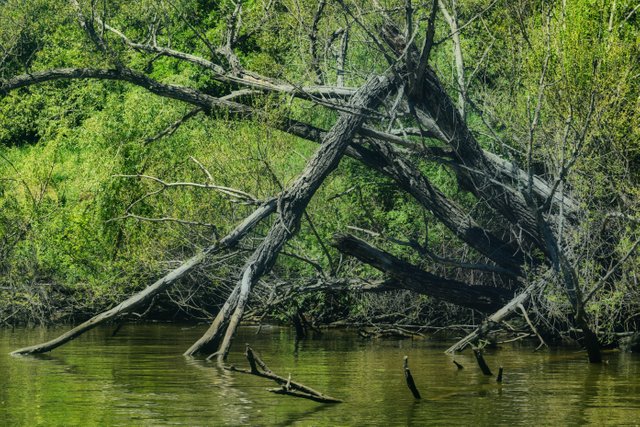📷Curiosities about the Azores Archipelago
Italy Community
✅ 1909 | The Mystery of the Schooner Henry Clausen Jr. at Corvo Island
Modern society relies heavily on telecommunications, but these technologies are relatively recent inventions. Pioneers like Alexander Graham Bell, who invented the telephone, and Guglielmo Marconi, who developed wireless telegraphy, only brought these advancements to life in the late 19th century. It was only in the early 20th century that telecommunications began to be used effectively.
Before that, maritime navigation faced emergencies in complete isolation — unable to communicate distress signals beyond the horizon. Without any means of requesting help, vessels often succumbed to disaster, many of which went unrecorded or remain unexplained.
Naturally, the Azores were no exception. The region was also the setting for maritime tragedies that remain mysterious to this day. One such case occurred in 1909, off the coast of Corvo Island, when a schooner named Henry Clausen Jr. appeared mysteriously — anchored, partially submerged, and completely abandoned.
Discovery of the Schooner
A rare surviving document describing the event is a letter from the Maritime Delegate of Corvo to the Harbor Captain of Horta, dated April 11, 1909:
Corvo Island, April 11, 1909
To the Honorable Harbor Captain of Horta
From the Maritime Delegate of Corvo IslandI must report that on March 22, a ship appeared off this island’s coast, heavily submerged and mastless.
When the weather improved, I boarded her and found the ship anchored, unmanned, and loaded with pine timber. Written on the stern and both starboard and port sides were the following letters: HENRY CLAUSEN J.R., and below that, BATH.
The commander of the cruiser D. Carlos I, who was here today, provided me with the following details: official number 96053; distinctive signal K.H.F.P.; gross tonnage 549; net tonnage 476; length 153.7 ft; beam 34.5 ft; draft 13 ft; rigged as a lugger. Launched in 1890 and built in Bath, Maine.
I had her towed to Porto da Casa, where she remains beached. I believe this location is best suited to recover the cargo.
This is what I am obliged to report for appropriate action.
Signed,
Luiz Arruda
No other documents were initially known concerning the vessel that arrived anchored at Corvo, abandoned, and “heavily submerged without masts.”
Clues from Across the Atlantic
More recently uncovered American documentation revealed that the Henry Clausen Jr. was a U.S. schooner, built in Bath, Maine. According to this information, the ship sailed from Gulfport, Mississippi, toward São Miguel Island with nine crew members. The schooner was abandoned on November 7, 1908, at an unknown location and for reasons that remain unclear — but all crew members were reportedly rescued.
It's likely that the schooner had been damaged by a storm or suffered a critical accident — perhaps losing her masts — and was at risk of sinking. Fortunately, she was rescued by the British steamship Snowdonian, registered in Cardiff, sailing from Philadelphia to Messina. All Henry Clausen Jr. crew members were saved in a difficult and dangerous operation.
To Owen Williams, seaman of the British steamship Snowdonian, in recognition of his heroic services in effecting the rescue on November 7, 1908, of the captain and crew of the American schooner Henry Clausen Jr. wrecked at sea.
This act of bravery was honored by the President of the United States, who awarded Presidential Gold Lifesaving Medals to several crew members of the Snowdonian.
Recognition in the Press
A catalog for a recent auction in London — where the Lifesaving Medal was sold — included a July 9, 1910 article from The Cardiff Times, providing further insight:
The President of the United States has forwarded through the British Foreign Office for presentation to Captain Robert Jones and Chief Officer James Jones, of the Cardiff steamship Snowdonian, handsome pairs of binoculars, and also gold medals for Trimmer H. Dahmen and Seamen James McKenna, Owen Williams, and David Jones, in recognition of their services in rescuing Captain Hudson, Mrs. Hudson, and the crew of the American schooner Henry Clausen Jr. on November 7, 1908.
The rescue was particularly meritorious and timely. When the Snowdonian arrived, the crew had lost all hope of being rescued. Encouraged by Mrs. Hudson — on her honeymoon — who sang hymns among them, the entire crew was finally saved after a fierce battle with the elements.
Before abandoning the vessel, it was set on fire to prevent it from becoming a navigation hazard.
A Lingering Mystery
Thanks to information from Bonhams Auction House, the story of the Henry Clausen Jr. was partially reconstructed. Yet, a puzzling question remains: How did the schooner arrive at Corvo Island?
It appeared anchored and unmanned approximately 135 days after being abandoned. Though reports claimed the ship had been set on fire, it clearly remained afloat and intact enough to drift across the Atlantic.
The schooner was eventually towed to Porto da Casa, where efforts were made to salvage its cargo — in keeping with the longstanding Corvo tradition:
Wrecks are frequent around Corvo Island, and so are the wash-ups of timber, barrels of oil, and other goods. These are recovered and amicably shared among the islanders. To this day, they have never paid the local customs delegation for any of the goods salvaged.
| Category | #italy |
| Photo taken at | Douro Valley - Portugal |
)


Upvoted! Thank you for supporting witness @jswit.